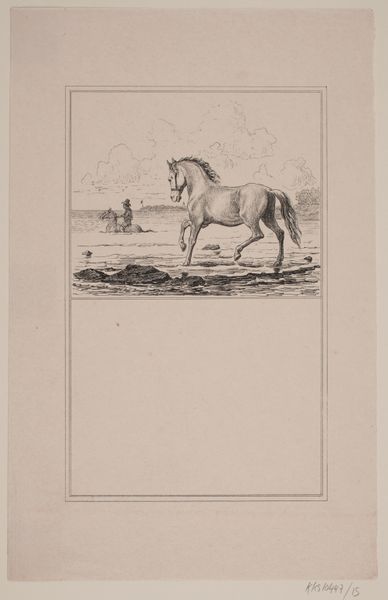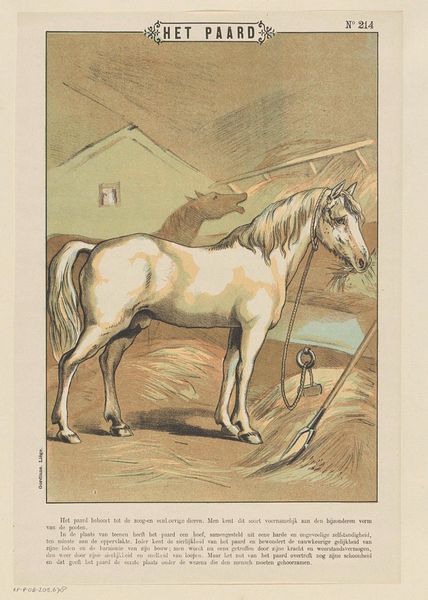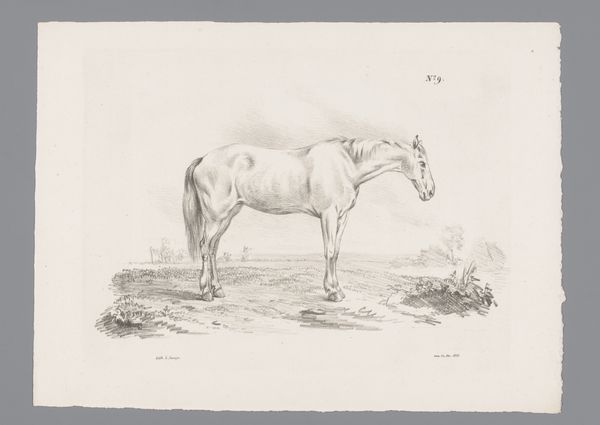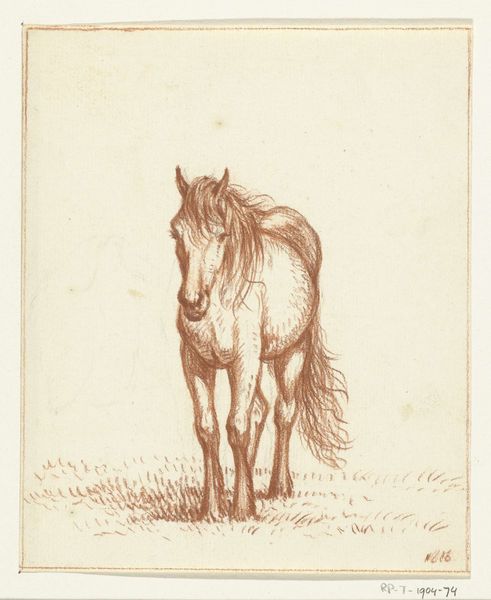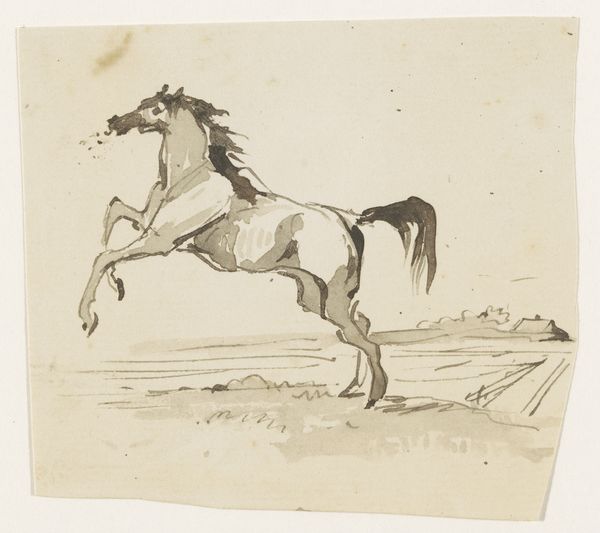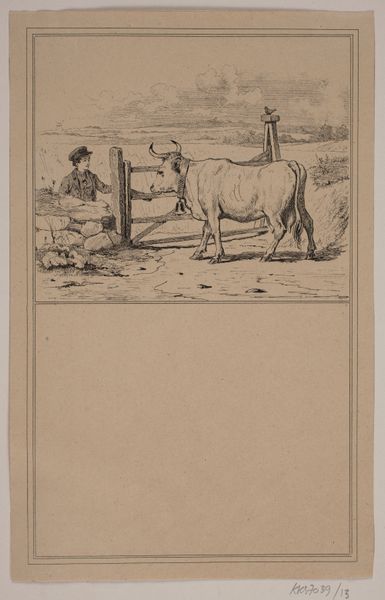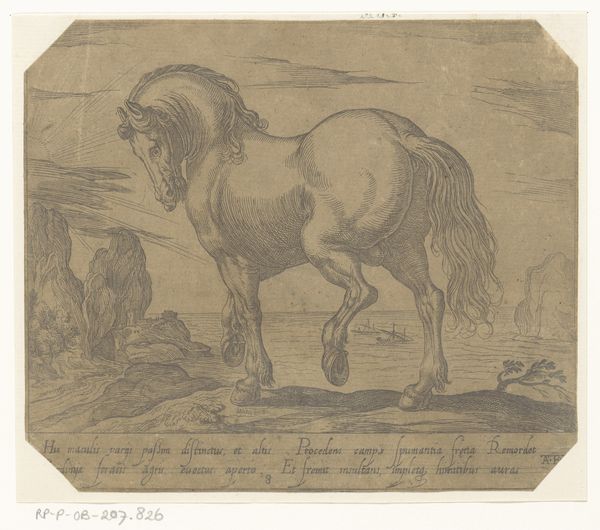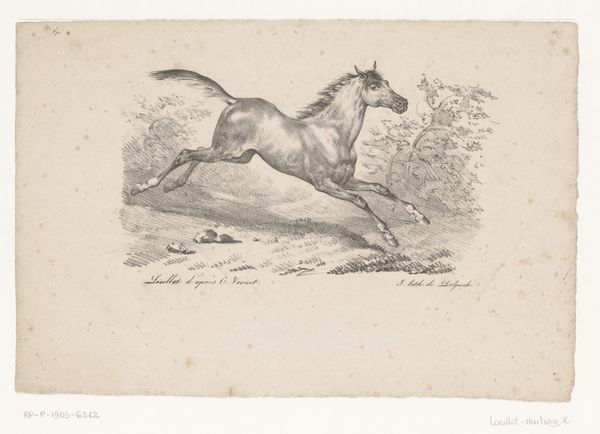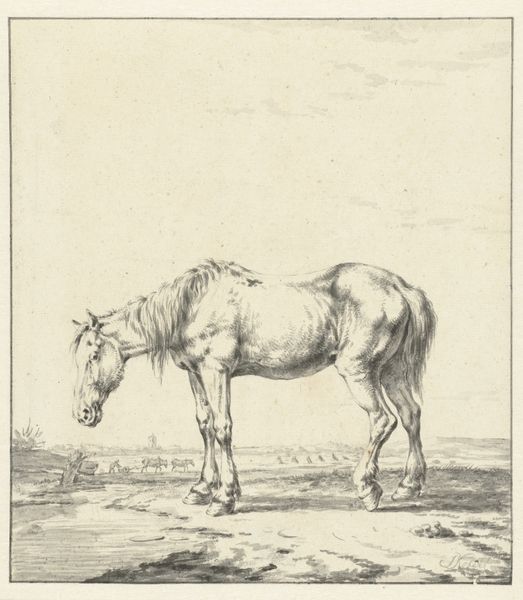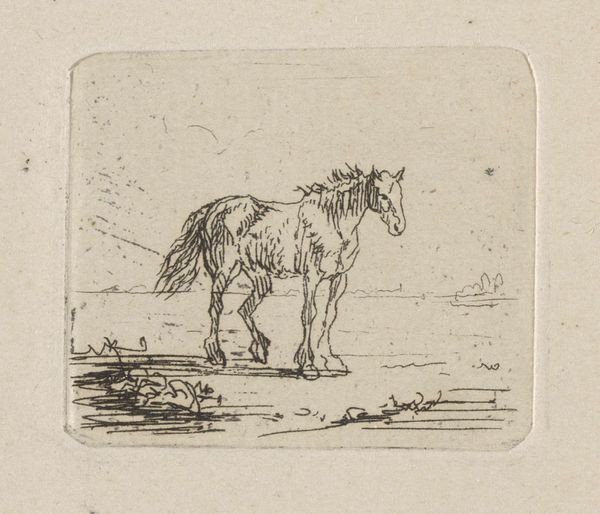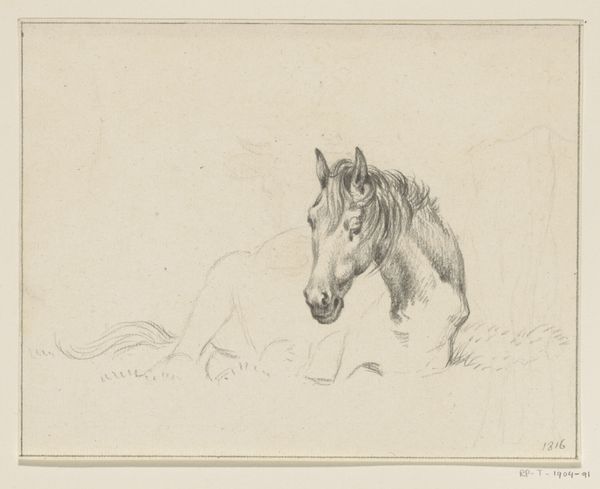
Hesten i vandet. Nr. 22 i Chr. Winther og M. Rørbye, "25 Billeder for små børn" 1846
0:00
0:00
lithograph, print
#
lithograph
# print
#
landscape
#
genre-painting
Dimensions: 205 mm (height) x 130 mm (width) (brutto)
Editor: Here we have "The Horse in the Water," number 22 in the series "25 Pictures for Small Children," a lithograph made in 1846 by Adolph Kittendorff and M. Rørbye. It’s… charming, in its simplicity. What strikes me is the way the artist used the lithographic process to depict such varied textures, like the horse's coat and the ripples in the water. What can you tell me about it? Curator: Well, first let's think about lithography. How does the accessibility and reproducibility of a medium like lithography affect the audience for art? It challenges established conventions, doesn’t it? Rather than focusing solely on unique, handcrafted paintings destined for elite collections, this artwork serves a mass-market purpose. Think about its original audience: children. Editor: Right, it's meant for children. How does the choice of lithography reflect broader societal shifts during the 19th century? Curator: Precisely! The industrial revolution increased accessibility, making art and education accessible. The mass production of images became not only possible but desirable. Lithography makes visual narratives – like this image of a horse and rider in shallow water– available to wider circles. This opens opportunities to introduce landscape or genre paintings in educational tools and leisure time for families and their kids. Editor: So, it's not just the image itself, but the means of production that carries meaning? Curator: Exactly. The choice of lithography speaks volumes about the artist’s intention to disseminate these images as part of a growing popular culture. Now consider what material processes might enable and constrain image making, influencing both artistic choice and its distribution. Editor: That definitely changes my perspective. I was so focused on the subject, I missed the point that the medium itself speaks volumes about the artwork’s historical purpose! Curator: I find these observations to be quite astute; that focus on materiality truly deepens one's analysis of not only its artistic execution, but what one may conclude from production.
Comments
No comments
Be the first to comment and join the conversation on the ultimate creative platform.
